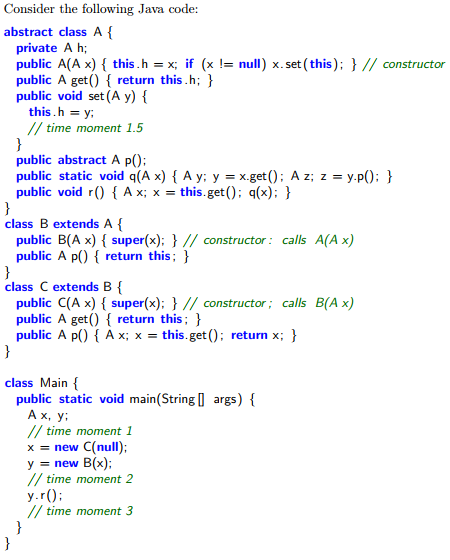Question
Show the state of the stack and the heap at time moment 3. Specifically, show the activation records that are on the stack, in the
Show the state of the stack and the heap at time moment 3.
Specifically, show the activation records that are on the stack, in the order in which they appear. Show clearly (1) each activation record and the method it corresponds to; (2) the local variables and formal parameters in each of these records; (3) the values stored in the variables and parameters on the stack (show ? for uninitialized variables). For the state of the heap, show all run-time objects that are alive at moment 2, together with the values of their fields. If a stack/heap location has a reference value, describe clearly which entity is being referenced.
*Note: This is not a coding question, rather a question that traces code. Please do not answer with a program/code. Use the information provided below to retrieve the answer:

Step by Step Solution
There are 3 Steps involved in it
Step: 1

Get Instant Access to Expert-Tailored Solutions
See step-by-step solutions with expert insights and AI powered tools for academic success
Step: 2

Step: 3

Ace Your Homework with AI
Get the answers you need in no time with our AI-driven, step-by-step assistance
Get Started


